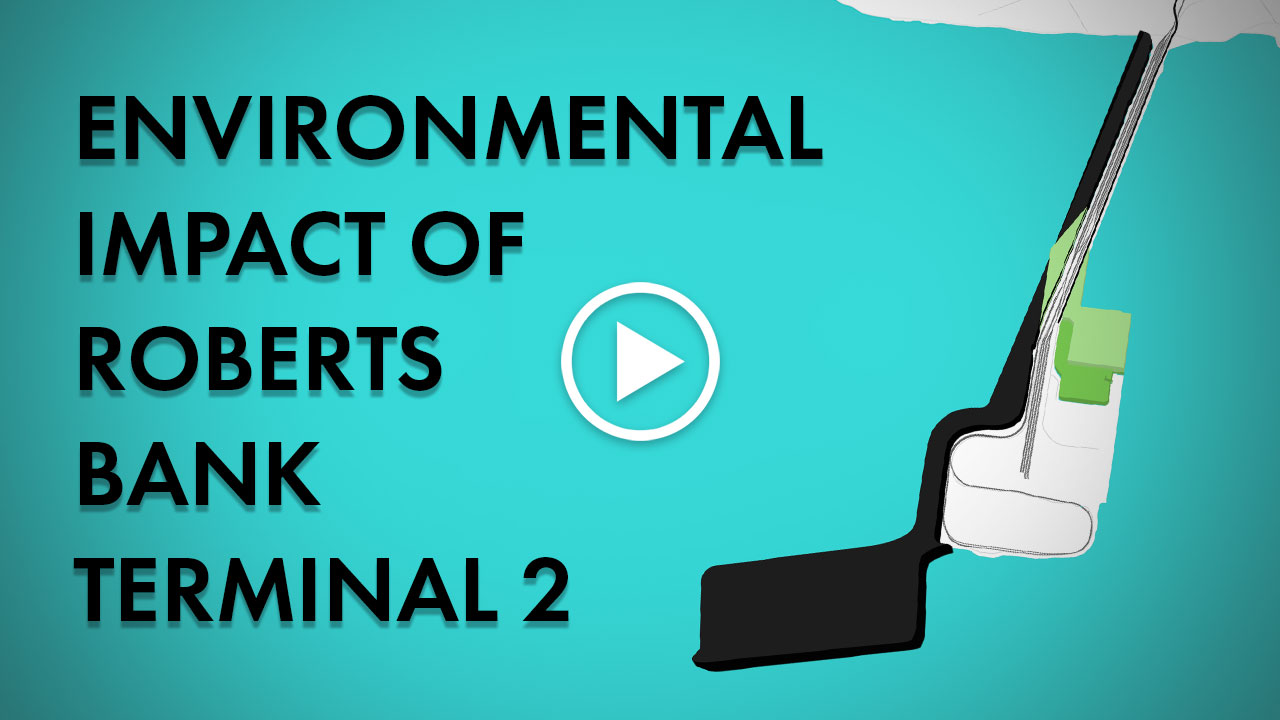Can the creation of new habitats for migrating shorebirds reduce the expected environmental impact of a proposed $3 billion container cargo terminal at Roberts Bank?
The Vancouver Fraser Port Authority (VFPA), which is behind the bid to build the massive Terminal 2 expansion, believes it can and is developing a manual on how to create the biofilm similar to that found at the Fraser River estuary adjacent to the project.
But local environmental groups are skeptical about replacement of the biofilm that could be destroyed by the multibillion-dollar project that will affect 177 hectares of the estuary area.
The biofilm is a layer of organic substance found in intertidal mudflats like the Fraser River estuary. It provides a key part of the diet of migrating birds like the western sandpiper on their way to breeding areas in western Alaska from as far south as Peru.
Duncan Wilson, the VFPA’s vice-president of Environment, Community and Government Affairs, said officials have been working to address concerns about the biofilm and western sandpipers since 2012.
“During the [2019] public hearing for the project, we heard concerns regarding the potential project-related effects on biofilm habitat,” Wilson said in a statement, “so we committed to developing a manual to describe methods, techniques and best practices to construct, restore and enhance biofilm habitat, using case studies of projects that have successfully created habitat-supporting biofilm.”
He added that an initial draft of the manual has already been shared with Indigenous groups and federal agencies.
“Based on this work, we remain confident that, with mitigation, there will be more than enough biofilm at Roberts Bank after the project is complete to continue to support the western sandpiper population during their migration. The manual is focused on how to create the type of biofilm that grows in intertidal or periodically wetted freshwater, coastal marine, and estuarine environments such as the Fraser River estuary.”
Roger Emsley, a Delta resident and a member of Against Port Expansion, has been opposed to the construction of Terminal 2 since the project was first proposed in 2013. Emsley, who cited a February report in the Wiley Ecology and Evolution Journal calling the Roberts Bank biofilm issue “complex” and “a critical link in the Pacific Flyway stopover chain for shorebird populations,” said he is disheartened to discover that the VFPA’s biofilm manual has not been shared with the public – and may not be until the project approval process nears its end.
He said that one of the key areas the manual focuses on is the question of recreating biofilm if it is destroyed.
“And scientists – including those at Environment Canada – have always said it’s impossible and not feasible to create biofilm on the scale needed to replace what they will be destroying with Terminal 2.
“To me, this [Wiley Ecology report] is a very important new scientific paper that officials need to consider. But the concern that we have is that this is nothing more than going through the exercise.… The public consultation, when it comes, will it be enough for the federal ministers to stop it?”
Emsley said he remains encouraged by the opposition to the project from not only environmental groups like Fraser Voices, Raincoast Conservation and the Georgia Straight Alliance, but also municipal governments in Richmond and Delta.
But he said he is also disheartened that the VFPA is continuing its push to convince Ottawa to approve Terminal 2 and its doubling of Vancouver’s container cargo-handling capacity even though it might not be necessary, especially given the less environmentally sensitive option of increasing that capacity at the Port of Prince Rupert.
The Terminal 2 application process was pushed back last year after federal Environment Minister Jonathan Wilkinson told the VFPA that Ottawa requires more information on how the port plans to address a list of concerns raised during the 2019 environmental impact assessment public panels in B.C.
The VFPA initially said it planned to issue a mitigation plan by the end of 2020, but it has since delayed that release to Ottawa until sometime later this year.
The VFPA contends that the additional container terminal space is needed to ensure that Vancouver does not run out of cargo-handling capacity by the 2030s; opponents argue that a significant portion of the port’s business is shipping goods produced in the United States, which reduces the benefit to the Canadian economy.
A rival project at Roberts Bank – GCT Canada’s Deltaport Berth 4 – is also going through regulatory approval and has been touted by its proponents as being a smaller, less expensive and more sustainable container capacity expansion option.
GCT operates the Port of Vancouver’s GCT Deltaport container terminal at Roberts Bank and Vanterm in Vancouver.
The VFPA has said it wants another operator at Terminal 2 to keep a competitive balance in the local container terminal market.
It is unclear if Deltaport Berth 4 would proceed if Terminal 2 receives its approval first.
This article originally titled Terminal 2 biofilm restoration recipe gets mixed reviews written by Chuck Chiang was originally published in Business in Vancouver (BIV) on March 19, 2021.
Watch: Environmental impacts of Port of Vancouver’s Roberts Bank Terminal 2
